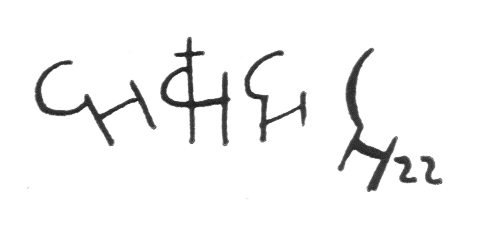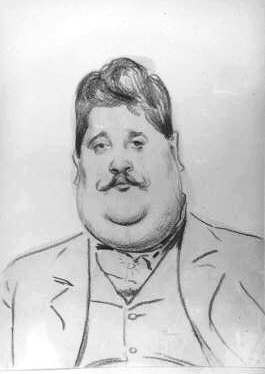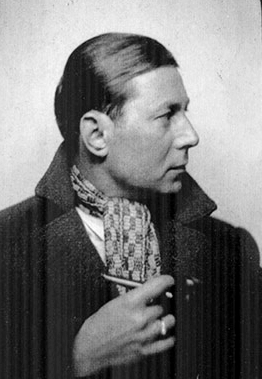|
Hagenbund
The Hagenbund or Künstlerbund Hagen was a group of Austrian artists that formed in 1899. The group's name derived from the name Herr Hagen, the proprietor of an inn in Vienna which they frequented. Early history The group's most prominent members early on were Heinrich Lefler and Joseph Urban, who had originally worked and exhibited within the conservative Vienna Künstlerhaus, but now, like the Vienna Secession, rebelled against the establishment and formed their own organization. The Hagenbund operated for almost a decade in the shadow of the popular and successful Secession, and only in the years that followed the damaging resignation of the Klimt Group from the Secession did its members succeed in developing a more moderate, independent line, in which atmosphere played a major role. After World War I After 1918, the formal language of the Hagenbund came to dominate artistic activity in Vienna, and in the 1920s it provided the most important focus for new artistic currents. ... [...More Info...] [...Related Items...] OR: [Wikipedia] [Google] [Baidu] |
Theodore Fried
Theodore Fried (May 19, 1902 -1980 - known to his friends as Tivadar Fried) was a Hungarian artist, who worked in Vienna, Paris and New York. Early life (Budapest-Vienna) Fried was born in Budapest (or possibly Szeged) in 1902. His father – a watchmaker and jeweller – died when he was nine years old. In 1920 he entered the Budapest Academy of Fine Arts and studied under Gyula Rudnay for four years. His surviving early work includes charcoal drawings of scenes of life which reflect the hardship and poverty of the period after the First World War. To broaden his horizons he moved to Vienna in June 1924 taking with him seven oil paintings and sixty drawings. He was given a one-man exhibition at the Galerie Hugo Heller. This gallery was run by the Heller family. Hugo Heller, who had died the previous year, had been a bookseller and a central figure in Viennese cultural life, who was particularly noted for promoting the writings of Sigmund Freud. It was through the Galerie that he ... [...More Info...] [...Related Items...] OR: [Wikipedia] [Google] [Baidu] |
Georg Mayer-Marton
George Mayer-Marton (3 June 1897 – 8 August 1960) was a Hungarian Jewish artist who was a significant figure in Viennese art between the First and Second World Wars, working in oil, watercolour and graphics. Following his forced emigration to England in 1938, he continued to paint in watercolour and oil. He pioneered the technique of Byzantine mosaic in the UK. Biography Mayer-Marton was born György, or Georg in German, later changed to George on British naturalization, in Győr, Kingdom of Hungary in 1897, and grew up during the final years of Austro-Hungary. He served in the Austro-Hungarian Army during the First World War. From 1919 to 1924 he studied art at the Academy of Fine Arts Vienna and Academy of Fine Arts, Munich, and also visited Ravenna in Italy. He settled in Vienna, and in 1927 became Secretary, later Vice-President, of the leading progressive society of Viennese artists, the Hagenbund. In 1928 he provided illustrations in the Chinese style for ''Der Kreidek ... [...More Info...] [...Related Items...] OR: [Wikipedia] [Google] [Baidu] |
Carry Hauser
Carry Hauser, born Carl Maria Hauser (16 February 1895 – 28 October 1985), was an Austrian painter, stage set designer and poet. Life Carry Hauser was born in Vienna as Carl Maria Hauser into the family of a civil servant. He was educated at the ''Schottengymnasium'' and the ''Höhere Graphische Bundes-Lehr- und Versuchsanstalt'', after which he studied at the Wiener Kunstgewerbeschule under, among others, Adolf Michael Boehm, Anton von Kenner, Alfred Roller and Oskar Strnad. He then began his career as a painter, illustrator, theatrical designer and author, which was interrupted by World War I, for military service in which he volunteered in 1914. His war experiences made him a pacifist. After the war he returned to Vienna, where among others he met Franz Theodor Csokor, for whose play ''Die rote Straße'' ("The Red Street") he designed the set in 1918. In the same year the first comprehensive exhibition of his work was held, in the museum at Troppau, and another was ar ... [...More Info...] [...Related Items...] OR: [Wikipedia] [Google] [Baidu] |
Heinrich Lefler
Heinrich Lefler (7 November 1863, in Vienna – 14 March 1919, in Vienna) was an Austrian painter, graphic artist and stage designer. His father was the painter Franz Lefler. Life and work From 1880 to 1884, he studied at the Academy of Fine Arts Vienna under Christian Griepenkerl and, from 1884, at the Academy of Fine Arts Munich under Nikolaus Gysis and Wilhelm von Diez. In 1891, he became a member of the Society of Austrian Artists and, in 1900, was a founding member of the Hagenbund. From 1900 to 1903, he was an assistant to Anton Brioschi, the head designer at the Vienna State Opera, following which he became a professor at the Academy until 1910. While at the Vienna Opera, he designed a set for the Metropolitan Opera and shipped the pieces to New York. Besides the time spent in his formal occupations, he spent a great deal of time in Weißenbach an der Triesting with his father and his brother-in-law, Joseph Urban, a fellow scenic designer, where they painted murals on ... [...More Info...] [...Related Items...] OR: [Wikipedia] [Google] [Baidu] |
Joseph Urban
Joseph Urban (May 26, 1872 – July 10, 1933) was an Austrian-American architect, illustrator, and scenic designer. Life and career Joseph Urban was born on May 26, 1872, in Vienna. He received his first architectural commission at age 19 when he was selected to design the new wing of the Abdin Palace in Cairo by Tewfik Pasha. He became known around the world for his innovative use of color, his pointillist technique, and his decorative use of line. He designed buildings throughout the world from Esterhazy Castle in Hungary to the Ziegfeld Theatre in New York. Urban studied architecture at the Academy of Fine Arts Vienna under Karl von Hasenauer. In 1890, he and his brother-in-law, Heinrich Lefler, were among the founders of the Hagenbund. Urban's early work with illustrated books was inspired by Lefler and, together, they created what are considered seminal examples of children's book illustration. Urban immigrated to the United States in 1911 to become the art director o ... [...More Info...] [...Related Items...] OR: [Wikipedia] [Google] [Baidu] |
Fritz Schwarz-Waldegg
Fritz Schwarz-Waldegg, originally Friedrich Schwarz (1 March 1889, Vienna - 4 September 1942, Maly Trostenets) was an Austrian Expressionist and Cubist painter of Jewish ancestry. Biography His father was a magistrate's clerk.Brief biography @ the Österreichisches Biographisches Lexikon, He showed an early interest in art and his parents were supportive. At the age of seventeen, he began attending the private art school of David Kohn (1861-1922), a portrait and painter. He received further training at the under [...More Info...] [...Related Items...] OR: [Wikipedia] [Google] [Baidu] |
Edgar Degas
Edgar Degas (, ; born Hilaire-Germain-Edgar De Gas, ; 19 July 183427 September 1917) was a French Impressionist artist famous for his pastel drawings and oil paintings. Degas also produced bronze sculptures, prints and drawings. Degas is especially identified with the subject of dance; more than half of his works depict dancers. Although Degas is regarded as one of the founders of Impressionism, he rejected the term, preferring to be called a realist,Gordon and Forge 1988, p. 31 and did not paint outdoors as many Impressionists did. Degas was a superb draftsman, and particularly masterly in depicting movement, as can be seen in his rendition of dancers and bathing female nudes. In addition to ballet dancers and bathing women, Degas painted racehorses and racing jockeys, as well as portraits. His portraits are notable for their psychological complexity and their portrayal of human isolation. At the beginning of his career, Degas wanted to be a history painter, a calling f ... [...More Info...] [...Related Items...] OR: [Wikipedia] [Google] [Baidu] |
Josef Dobrowsky
Josef Dobrowsky (22 September 1889 - 9 January 1964) was an Austrian painter and member of the Zinkerbacher Artist Colony that lived and worked together at Lake Wolfgang until its dissolution after Austria was annexed by Germany, known as the Anschluss, in 1938. Early life Josef Dobrowsky was born in Carlsbad, Bohemia, part of the Austrian Empire at the time under the Hapsbug monarchy. His father was a jeweler. As a teenager Dobrowsky attended the Vienna School of Applied Arts, Franz Hohenberger's painting school until 1906 when he began studying at the Academy of Fine Arts in Vienna where he learned under Christian Griepenkerl and Rudolf Bacher. There he became friends with Ernst Huber. From 1914 to 1918 his studies were interrupted by the First World War and his military service. He returned to school after the war and graduated in 1919. In 1915, Dobrowsky married Theresia Mayer (1889–1972). They had two sons together, Karl and Josef. Career Following the war he w ... [...More Info...] [...Related Items...] OR: [Wikipedia] [Google] [Baidu] |
Raoul Dufy
Raoul Dufy (; 3 June 1877 – 23 March 1953) was a French Fauvism, Fauvist painter. He developed a colorful, decorative style that became fashionable for designs of ceramic art, ceramics and textile as well as decorative schemes for public buildings. He is noted for scenes of open-air social events.He was also a drawing, draftsman, printmaker, book illustrator, scenic designer, a designer of furniture and a planner of public spaces. Biography Early life Dufy was born into a large family at Le Havre, in Normandy. He had a younger brother, Jean Dufy, who also became an artist. Dufy left school at the age of fourteen to work in a coffee-importing company. In 1895, when he was 18, he started taking evening classes in art at Le Havre's École des Beaux-Arts (municipal art school). The classes were taught by Charles Lhuillier, who forty years earlier had been a student of the French portrait painter Ingres. There Dufy met and Othon Friesz, with whom he later shared a studio in Mo ... [...More Info...] [...Related Items...] OR: [Wikipedia] [Google] [Baidu] |
Gerhart Frankl
Gerhart may refer to: As a given name * Gerhart Baum (born 1932), German politician and former Federal Minister of the Interior * Gerhart Eisler (1897-1968), German communist politician * Gerhart Friedlander (1916–2009), nuclear chemist who worked on the Manhattan Project * Gerhart Hauptmann (1882–1946), German dramatist and Nobel Prize winner * Gerhart Jander (1892–1961), German inorganic chemist * Gerhart Lüders (1920–1995), German theoretical physicist * Gerhart M. Riegner (1911-2001), sender of the Riegner Telegram (the first official communication of the planned Holocaust) and secretary-general of the World Jewish Congress * Gerhart Schirmer (1913-2004), highly decorated German soldier of World War II As a surname * Bobby Gerhart (born 1958), U.S. racecar driver * Edgar Gerhart (1923-1992), Canadian lawyer, judge and politician * Emanuel Vogel Gerhart (1817-1904), U.S. minister of the German Reformed Church * John K. Gerhart (1907-1981), U.S. Air Force general * Kl ... [...More Info...] [...Related Items...] OR: [Wikipedia] [Google] [Baidu] |
Lyonel Feininger
Lyonel Charles Feininger (July 17, 1871January 13, 1956) was a German-American painter, and a leading exponent of Expressionism. He also worked as a caricaturist and comic strip artist. He was born and grew up in New York City, traveling to Germany at 16 to study and perfect his art. He started his career as a cartoonist in 1894 and met with much success in this area. He was also a commercial caricaturist for 20 years for magazines and newspapers in the USA and Germany. At the age of 36, he started to work as a fine artist. He also produced a large body of photographic works between 1928 and the mid 1950s, but he kept these primarily within his circle of friends. He was also a pianist and composer, with several piano compositions and fugues for organ extant. Life and work Lyonel Feininger was born to German-American violinist and composer Karl Feininger and American singer Elizabeth Feininger. He was born and grew up in New York City, but traveled to Germany at the age of 16 in ... [...More Info...] [...Related Items...] OR: [Wikipedia] [Google] [Baidu] |





.jpg)